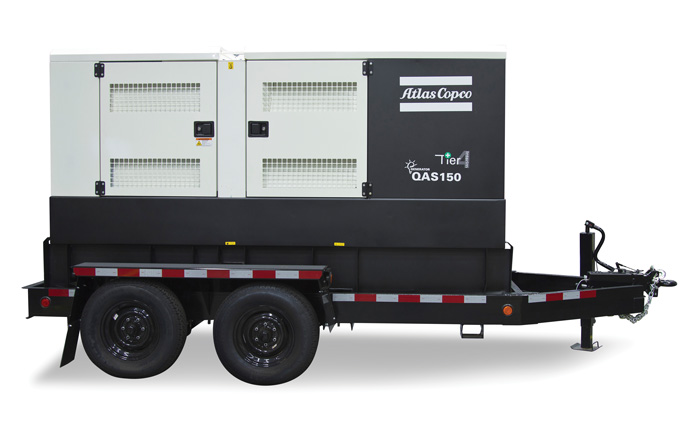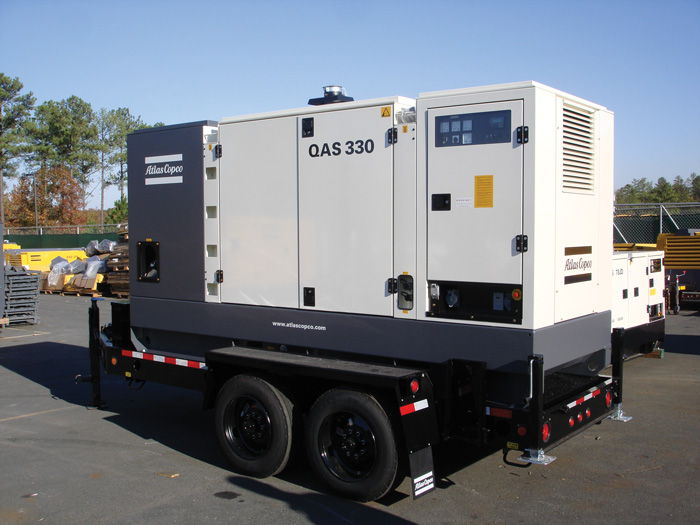Purchasing Power
 With so many choices on the market, buying a portable generator can be confusing and overwhelming — especially if the purchase is one of many to be done within a portfolio. To ease the purchasing process, let’s review a few points for consideration.
With so many choices on the market, buying a portable generator can be confusing and overwhelming — especially if the purchase is one of many to be done within a portfolio. To ease the purchasing process, let’s review a few points for consideration.
What Are Your Needs?
This is a very basic question, one that any qualified portable generator salesperson should work with a customer to refine and clarify. But it is often the most difficult to answer as there are many things to consider. To get the most out of a purchase, consider the following factors:
Usage: Intended use drastically affects the quality, and ultimately the cost, of the generator you choose. Generators are rated based on continuous use, prime power or standby power. Consider whether the plan is to use a generator 24 hours a day, seven days a week (continuous duty), for shift or varying loads (prime power) or only in emergency situations, for example, to provide power at a hospital or airport during an outage.
Generator manufacturers design, build and test their machines in relation to their target market and the foreseen applications. A generator designed for limited use is not created, built and tested in the same way for durability and efficiency as that of a unit designed for on-site power applications.
Load: To size a generator, it is important to understand what it is going to power. There are many types of loads and a variety of factors that affect how a load behaves. Some things to think about:
Power factor. Three-phase generator sets are rated for 0.8 loads, and single-phase units are rated for 1.0 loads. Lower power factor loads require larger alternators or generators.
Peak loads. Generally a consideration for equipment that frequently cycles on and off, such as cranes, heating systems or water pumps.
Motor loads. Consider the size, type, starting method and operating current requirements.
Maximum allowable voltage and frequency variations. These are often taken into consideration when the equipment being powered is sensitive to significant variations in voltage and frequency.
Altitude and temperature: Although they are not living beings, diesel engines do “breathe.” Air is either more or less dense depending on altitude and ambient temperature. Therefore, engine performance can be affected by either of these two factors.
Voltage: Consider the ranges required on site both in single- and three-phase operation.
Daily power consumption curve: It is always a good idea to map out the daily power requirements hour-by-hour over a 24-hour period. One finding could be that two or three smaller generators in parallel may offer a reduced cost of operation as well as greater reliability and flexibility at a site over one big generator.
Consultation and education: Regardless of one’s level of knowledge when it comes to generators, it is always a good idea to consult with a local sales representative to see what is new or effective in your specific market. Manufacturers constantly challenge each other to innovate better ways of getting the job done. Some focus on general areas such as reduced cost of operation, ease of use or improved reliability, whereas others excel at specific application-based offerings. Don’t miss out on discovering a new way of meeting an application’s specific needs.
 Understanding Legislation and Regulations
Understanding Legislation and Regulations
Regulations that control the safe operation of generators can exist at all levels of government, as well as within public and private companies. As a result, it is recommended to consult with local authorities to ensure that a particular product meets the basic requirements. Here are a few questions to ask of a supplier and to review with local regulatory agencies:
Are there any local (state or city) power authority regulations that need to be met based on the application? For example, public events generally require special safety equipment.
Is the machine mounted on a trailer? If so, consider if it requires a license plate, an annual inspection or even electric or hydraulic brakes.
Your own company’s policies on environmental care and protection. Does your company actively pursue the most environmentally-friendly technologies?
There are also environmental considerations to be made. Although these may or may not be required by various government entities, many private companies also mandate these criteria.
Full fluid containment. In some cases, portable diesel-powered equipment, when brought to the site, must have 110-percent fluid containment. This means that the frame or “tub” of the machine is capable of containing 110 percent of the fluids on board.
Noise. Whether in a residential neighborhood or at a concert, noise regulations may be in place to protect the public.
Off-road diesel engine emissions. All diesel engines used in off-road applications that fall within a certain horsepower or application range must meet the applicable EPA emission regulations for particulate matter and nitrous oxides. Most generators manufactured with engines in the 175- to 750-hp range after Jan. 1, 2014, must comply with EPA Tier 4 Final (Tier 4f) regulations. Those outside that range (75 to 174 hp and above 750 hp) must meet Tier 4f by 2015. Emergency standby generators, however, that operate only on the loss of normal utility power may continue at one tier level below. There is also an allowance given for normal maintenance and testing.
Although Tier 4 Interim (Tier 4i) and Tier 4f technology costs more at the time of initial purchase, fuel consumption overall is usually better. Will the long-term operational costs outweigh the initial difference in purchase price? Also consider that all Tier 4i and Tier 4f engines require ultra low sulfur diesel fuel (ULSD) and low-ash oil, as well as additional servicing of a diesel particulate filter (DPF) if so equipped.
There are many factors to consider when buying a portable generator, and customers are not alone to make the decision. Reputable manufacturers consider all of these elements and can help direct you to the right machine for your application and region.
Jim Siffring is the Product Manager for Generators for Atlas Copco Construction Mining Technique USA LLC.




